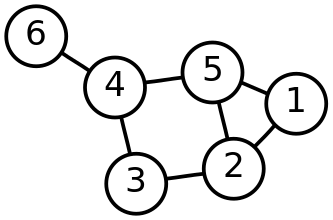Kindle: Future Book
/An electrophoretic display is an information display that forms visible images by rearranging charged pigment particles using an applied electric field.
An electrophoretic display is an information display that forms visible images by rearranging charged pigment particles using an applied electric field.
 Check out these video demos of the pen that records what you write while recording the audio of the conversation. It also imports both the audio and visual notes into your computer.
Check out these video demos of the pen that records what you write while recording the audio of the conversation. It also imports both the audio and visual notes into your computer.Smart Pen uses the Livescribe Paper-Based Computing Platform that turns a spiral notebook into a user interface. The pattern of simple, micro-dots enables a patented dot-positioning system to precisely track the smartpen’s movement on paper. As a result, anything you write – words, numbers or drawings – can be stored, recognized, and intelligently responded to by the Pulse smartpen.

From prehistoric cave walls and charcoal to the modern notebook and fountain pen, the human need for spontaneous self-expression through drawing and writing has endured. People have actively used writing tools and paper, in one form or another, for thousands of years.
Livescribe Chief Executive Officer Jim Marggraff introduces a new solution to this age-old problem and a long-term vision on how paper-based computing will advance the next chapter in mobile computing. Livescribe’s intelligent writing system includes an innovative smartpen and dot paper that together bring traditional paper to life.
By developing a paper-based platform, Livescribe will fundamentally change the way people capture, use and share information with pen and paper, making the possibilities of pen and paper endless. With Livescribe, people will no longer have to settle – they can have the best of both the paper and digital worlds.
|
At least it was bubbly Katie Couric, who giggled, and not, shouty Bill O'Reilly. I do think that the Daily Show should incorporate the methodology for full effect.
|
|
|
This just in...
Of the teenagers in their survey, just over 22 percent of males said they had watched pro wrestling in the past two weeks, as did 14 percent of females. |
|
What is the learning environment like today?
What is happening as the 19th century model (teacher + chalkboard) collides with the new media tools (iPod + laptop + Wifi)?
How many hours do they spend in class? On the phone? On Facebook? How do the current educational methods even begin to prepare them for jobs that don't even exist yet?
This short video summarizing some of the most important characteristics of students today - how they learn, what they need to learn, their goals, hopes, dreams, what their lives will be like, and what kinds of changes they will experience in their lifetime. Created by Michael Wesch in collaboration with 200 students at Kansas State University.
 Via Ethan Zuckerman:
Via Ethan Zuckerman:
A new project by David Kobia and crew, encouraging Kenyans around the world to transcend their tribal identity and affirm their identity as Kenyans. An interesting response to the difficulties of keeping message boards sane during the crisis.Kobia also coordinated Ushahidi.com, a site that integrates GoogleMaps and SMS for citizens to report incidences of Riots, Deaths, Property Damage, Government Forces, Civilians, Looting, Rape, Peace.

It also has a running timeline of events, making it a powerful tool to trace the violence. Unfortunately, with some much violence involving so many impoverished people, this can't begin to give transparency to the chaos.
Although I am a Southern, American, white, suburban kid, I was born in Kenya and have carried hope and romance for this beautiful, passionate piece of the earth in my heart.

|
In addition to the law of monkey management, the authors list six rules of managing monkeys that are instructive to managers. These include:
1. Monkeys should be fed or shot. No one likes the consequences of a starving monkey. They tend to be very disagreeable and squeal and raise a ruckus. Monkeys must be fed periodically; in this analogy, the problem must be dealt with between the manager and the employee with the problem on a regular basis. If the monkey can be shot (the problem solved quickly), then feeding times are not necessary.
2. Every monkey should have an assigned next feeding time and a degree of initiative. After a feeding session, the manager should select an appropriate time for the next feeding and should have a number of action steps for the employee to take. "Can we meet next Tuesday at 10:30 a.m. to see how things are going and what we should do next?"
3. The monkey population should be kept below the maximum number that the manager has time to feed. The authors suggest that it should take 15 minutes to feed a monkey, and that managers should keep the list of problems that are in various stages of solution at a manageable number.
4. Monkeys should fed by appointment only. Allowing employees to bring problems to you on their timetable increases the chances that the monkey will move from the employee to the manager. By setting specific times for addressing the problem, managers empower employees to make interim decisions about the problem, and still report back.
5. Monkey feeding appointments may be rescheduled but never indefinitely postponed. Either party, the manager or the subordinate, may reschedule a feeding appointment for any reason, but it must be scheduled to a specific time to avoid losing track of the monkey.
6. Monkeys shall be fed face to face or by telephone, but not in writing. Holding feeding sessions via e-mail or memo transfers the monkey to the manager. An employee can pass the monkey to the manager by simply requesting a response. Feedings that take place in person or on the phone require the monkey to remain with the employee unless the supervisor takes an affirmative step to take it.
Proper delegation skills, properly applied as suggested in this creative approach, can help managers better solve problems and develop their employees' problem solving skills. Visualizing each problem as a monkey that is impatient and noisy can help managers see problems as they really are and address them in the best possible way. Beware of the monkeys that may come into your life today!
"Even when you are sick, if you have something that doesn't look nice, you don't want to put it on." |
 Part of the transparency section of Good Magazine, this short video commissioned by ED in '08 highlights details behind America's ranking in public education.
Part of the transparency section of Good Magazine, this short video commissioned by ED in '08 highlights details behind America's ranking in public education.
In 2002, UNICEF compared public education in 24 nations around the world. The U.S. ranked 18th. So what's the problem? Are we spending enough per student? Are students spending enough time in school? America needs to do some extra credit if its public education system is going to stay competitive. To boost America’s economy we must focus on strengthening K-12 education. Why? Economists estimate that if America raises student skills closer to that of European nations, the U.S. economy would grow by an additional 5% over 30 years resulting in an extra $1.5 trillion in 2037 alone—more than triple current U.S. spending on K-12 public education. |
Finding the right way view your data is as much an art as a science. The visualizations provided on Many Eyes range from the ordinary to the experimental. ManyEyes is deliberately providing a wide array of possibilities since this is an experimental site—and expect to see more soon. The podcast below traces the history of this data visualization project.
Both Viegas and Wattenberg are also known for their visualization-based artwork, which has been exhibited in venues such as the London Institute of Contemporary Arts and the Whitney Museum of American Art. The two became a team in 2003 when they decided to visualize Wikipedia, leading to the "history flow" project that revealed the self-healing nature of the online encyclopedia. They are currently exploring the power of web-based visualization and the social forms of data analysis it enables.
|
 This web 2.0 app drastically improves the (usually) tedious process of tracing family history, by combining the elegance of Flickr and the tools of social networking. http://www.geni.com
This web 2.0 app drastically improves the (usually) tedious process of tracing family history, by combining the elegance of Flickr and the tools of social networking. http://www.geni.com
|
 The power and flexibility of a network--whether a simple group of casual neighbors or a complex next generation communication network--depends not just on the number of connections, but on the quality of the nodes, and more important, the type of nodes. Below is a fantastic intro to the concept of graphs and networks. It helps in understanding the a social graph and how it differs from a social network.
The power and flexibility of a network--whether a simple group of casual neighbors or a complex next generation communication network--depends not just on the number of connections, but on the quality of the nodes, and more important, the type of nodes. Below is a fantastic intro to the concept of graphs and networks. It helps in understanding the a social graph and how it differs from a social network.
|
The implications for communities, networks, social enterprise and individuals is huge--access to one of the largest social networking platform in the world. It will be intriguing to see how Google's Open Social grows as a contender.
When Facebook first opened up its API in Fall of 2007, Worldchanging contributor, Jon Lebkowsky, observed that Google's collaboration with social network platforms to create Open Social:
Google's insight was that you could create a standard API that many social sites could adopt, so that developers could build applications to work across platforms. This would presumably stimulate innovations and make them more broadly available – great for users and second tier social networking sites, less great for Facebook (though in my opinion, anything that boosts social networking is good for anyone in that business).Henry Blodget of Silicon Alley Insider sees the recent decision as another brilliant Facebook move but predicts that Facebook wants to resist going completely "open" and allowing members to export their information and relationships at will.
Facebook might lose its control over its core asset (the billions of relationships among its millions of members, a.k.a., the social graph). This move seems another smart step toward a hybrid strategy: Allow app makers (and Facebook) to extend social-graph functionality to the web, gather more app users, and recruit more members--but retain full control over the social graph itself.
|
Scaredy-cat clients. Clients -- from brand managers to CMOs -- are the most risk-averse animals the world has ever seen Cunning Old Media. The old folks -- TV, radio, print -- already have all their metrics in place. Geek-o-phobia. Agencies have done a lousy job of integrating digital people into creative departments. Finance Department Fascists. Because we have a research industry that can't measure or predict emotional involvement, we just fall back on conventional measures of ROI We need a metric that captures the many nuances of involvement a consumer has for a brand. Nothing warms the cockles of a CFO's heart like an expanding pie chart, or a trend arrow pointing at the heavens. Until we get that, we're stuck trying to quantify thing like "passion" and "love." |
Alphachimp LLC is a visual learning company based in Houston, Texas.
Through drawings, animations, and the design-thinking process we help people understand complex situations and make better decisions.
We provide a cluster of inter-related services in the area of visual learning, graphic facilitation, problem-solving, and innovation.
COPYRIGHT © 2022 ALPHACHIMP, LLC
ALPHACHIMP® and ROCKSTAR SCRIBE® and DOODLES IN MOTION® are registered in the U.S. Patent and Trademark Office.